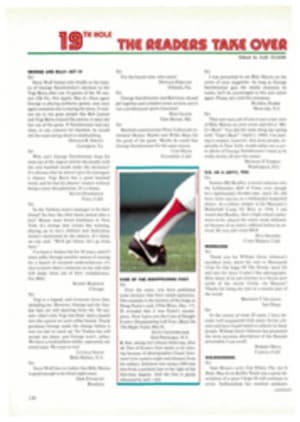
SOUTH BEND HAS A BRAND-NEW TWIST: A WHITE-WATER RACEWAY DOWNTOWN
South Bend is best known as the site of Notre Dame, but last Labor Day weekend, the competition wasn't football. Rather, it was a sport that had just emerged from wilderness ravines to the sidewalks of this northern Indiana city—white-water kayak and canoe racing.
The South Bend Slalom was the inaugural race on the Olde East Race Waterway, the city's new white-water sluiceway. And as evidenced by the 10,000 people pushing closer for a better look, the arrival of white-water racing in an urban setting proved to be quite an attraction. The Olde East is the only man-made white-water raceway in North America, and one of only three in the world. The others are outside Prague, Czechoslovakia and in Augsburg, West Germany.
Olde East courses through a restored mill run on the St. Joseph River, which flows through downtown South Bend. Built in the 1840s to provide waterpower for manufacturing plants along the river, the sluiceway fell into disuse and was filled in with debris during the 1960s. In 1972 the city contracted with a local engineering firm to conduct a river-corridor study, which became a master plan for downtown riverfront development. The final phase of the plan is the Olde East Race Waterway.
Bill Endicott, the coach of the U.S. white-water canoe team, was on hand for the inaugural race. Said Endicott, "I don't think we could find anyplace better suited than this river for simulating the water at Augsburg, where the world championships will take place June 13 to 16 of next year." The U.S. team-selection finals were held in the Olde East on April 27 and 28, and the 20-person team is now training in South Bend.
If one judges by the looks on the faces of spectators and competitors alike, a trip down South Bend's new Olde East Race Waterway is a thrill. The water comes in through three head gates in the St. Joseph River and rushes at a rate of as much as 1,300 cubic feet per second into a 1,900-foot cement-lined channel that is 35 feet across at its widest point. The water crashes against a series of obstacles strategically placed and bolted into the bottom of the channel or its sloping sides before running back out into the currents of the old St. Joe.
Paddlers fight the current by rising above the force of the water, trying to master the surge in a few hard, deft strokes. Each racer must pass through a series of 30 gates formed by red and green poles; the colors indicate which direction the paddler is to proceed through the gate. He must either take the fragile-looking kayak through the poles downstream—frontward or backward—or pass around the gate and paddle back upstream through the poles.
As Endicott says, "South Bend's raceway puts white-water racing right out in front of everyone. People who like to paddle will come here to South Bend to watch our world-class teams train, and they will learn. Olde East will popularize a tremendous sport."

